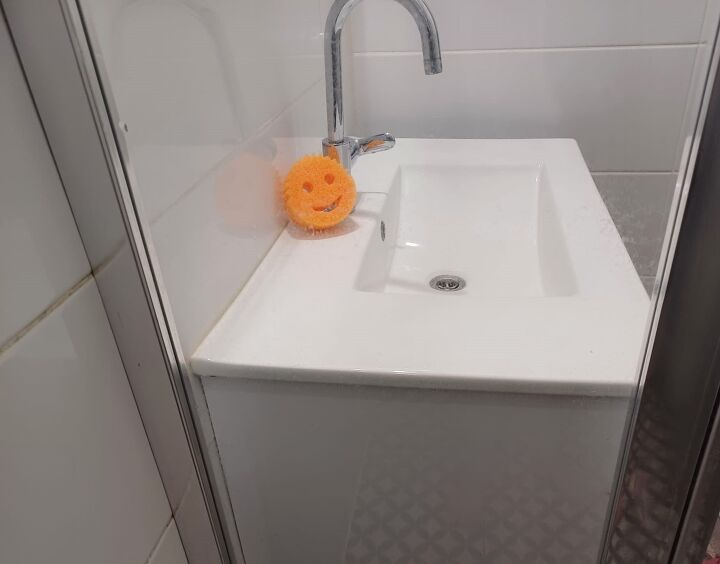Smoothing out sheetrock repairs
-
Anna. I'm assuming this wall is not textured And is a basic smooth drywall finish? Raking light, light at an angle nearly parallel to the wall ( what you have now with your new windows) will show flaws very easily as you have pointed out. To make drywall look good in this light you will need to skim it again and feather the edges of the repair...the more distant this feathering is the better it will look. Flat paints also hide better than eggshell or semi-gloss. I have done some repairs in this context where the repair will fan out a foot or more. Poorly built walls can also show full floor to ceiling bumps. These are even harder to hide. The trick is to work with multiple thin coats and evaluate your progress as you go...sanding and skimming when dry to get all the imperfections out....then prime and paint
 KMS Woodworks
on Jan 27, 2012
Helpful Reply
KMS Woodworks
on Jan 27, 2012
Helpful Reply -
-
KMS has it right on here. You will need to reskim the areas. The goal is to make feather out the bump larger (as opposed to higher) so that it tricks the eye to a point where you no longer see it.
 Dan's of Central Florida, Inc.
on Jan 27, 2012
Helpful Reply
Dan's of Central Florida, Inc.
on Jan 27, 2012
Helpful Reply -
-
DIY rookie drywall work can be really frustrating. I have had many walls where I worked all afternoon to make it perfect, only to see a glaring flaw the next morning. I would suggest hiring a pro to come touch this up. They shouldn't charge much for such a small job, and it would save you a lot of headaches.
 3po3
on Jan 27, 2012
Helpful Reply
3po3
on Jan 27, 2012
Helpful Reply -
-
This is exactly why new home builders use flat white paint on everything. Even those guys do lousy work. I just love when I did home inspections on new houses and shined my light against the wall. It showed up every little detail. You can take a electrical sander and lightly sand over the high spots. Your not trying to remove them but to break them down just a bit. Then with some spackle you will put another very thin coat over the area. You in effect are just going to "fill in" around the spot where you sanded. You should when your done end up with the spot showing just a bit with spackle surrounding it. There should be almost nothing there when your done. Then you need to wait for several hours for this to dry. Then do another coat of spackle but cover the spot in the center and go out a few more inches on all sides. Once again let dry then lightly sand using fine sandpaper. Then clean with damp rag and prime area. Use a flashlight and shine against wall to look for any imperfections. If need be, you can simply spackle over again. Once you get the hang of it, its not really hard. It just takes a few very thin coats to hide. Also the paint texture will also make these repairs stand out if your just spot painting. Once your done with all the dents and dings. Prime the entire wall area with a good quality primer using a slightly thicker nap roller. This will leave a bit of a texture although smooth on the wall. Then use your color coat with the roller that is needed for the paint your applying.
 Woodbridge Environmental Tiptophouse.com
on Jan 29, 2012
Helpful Reply
Woodbridge Environmental Tiptophouse.com
on Jan 29, 2012
Helpful Reply -
-
Wow, thanks. That's about what I would have guessed I'd have to do. Can't wait to fix it once and for all.
 A. M.
on Jan 29, 2012
Helpful Reply
A. M.
on Jan 29, 2012
Helpful Reply -
-
Good luck Anna, let us know how it goes!
 Dan's of Central Florida, Inc.
on Jan 29, 2012
Helpful Reply
Dan's of Central Florida, Inc.
on Jan 29, 2012
Helpful Reply -
-
I thank everyone for answering my question in such detail.
 Ernestine B
on Feb 10, 2012
Helpful Reply
Ernestine B
on Feb 10, 2012
Helpful Reply -
Related Discussions
How do I clean salt marks on my salt water pool?
My salt water pool leaves white marks all around the pool I have tried everything to remove them with no luck. Can someone please help me????
If you could redo your master bathroom, what would you change?
Dreaming of a master bathroom remodel?Tell us: If you could change just one thing, what would it be?Your input could inspire others looking for master bathroom ideas ... See more
Hardwood Floors or Carpet in Bedroom: What's Your Preference?
Hey Hometalkers! We've got a cozy debate going on here: when it comes to bedroom flooring, do you lean towards the warmth of carpet or the timeless elegance of hardwo... See more
What can I do about wood smoke coming into my house?
I need help. My back door neighbor heats with a wood stove all winter. They are downhill from me. Almost all their smoke makes its way into my house, causing headache... See more
How to find out the value of antique furniture
My husband and I are looking to sell his grandmother's dining room set but, we have no idea what to ask for it. We could not find any markings as to who made it, all ... See more
How do I fix a broken metal hanging rod in my closet
I have a broken shelf hanging rod in my closet I tried gluing And taping it and nothing worked I need help and also the shelf is slightly bent




